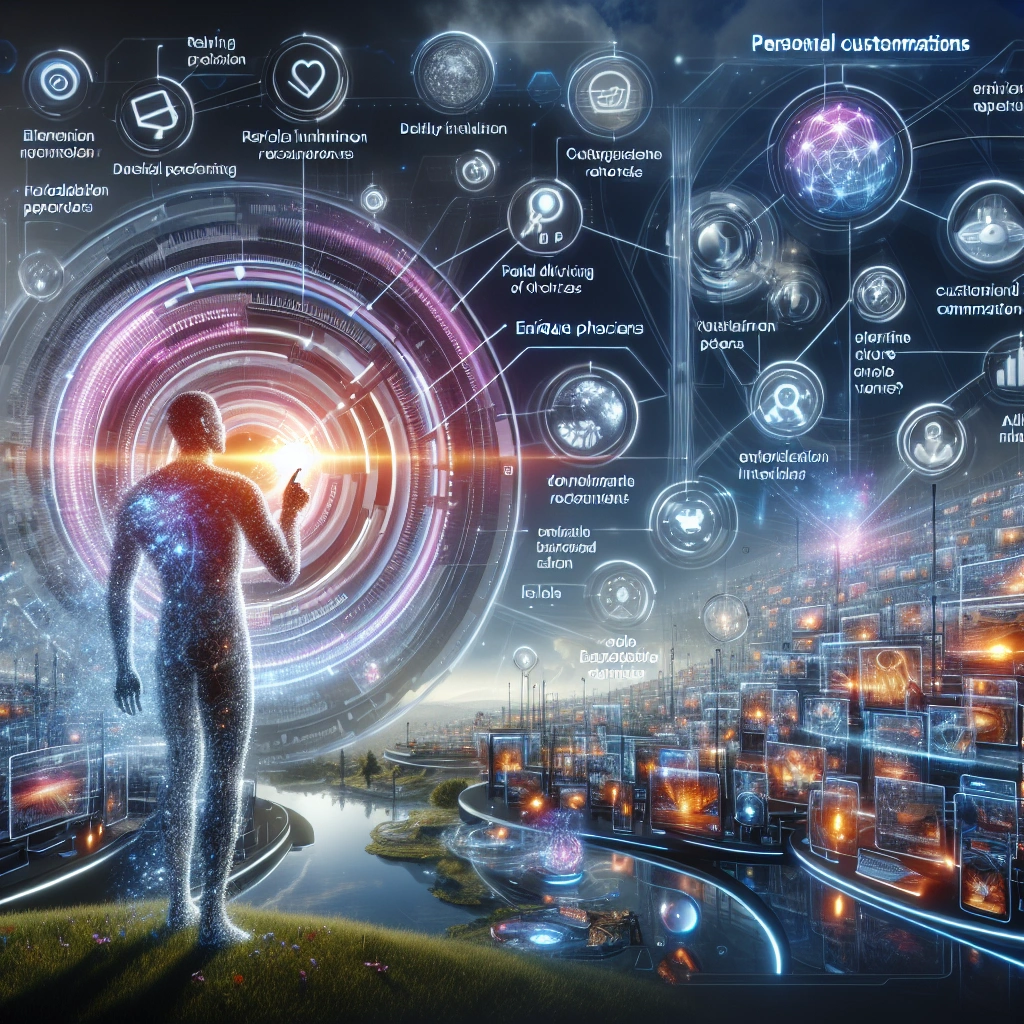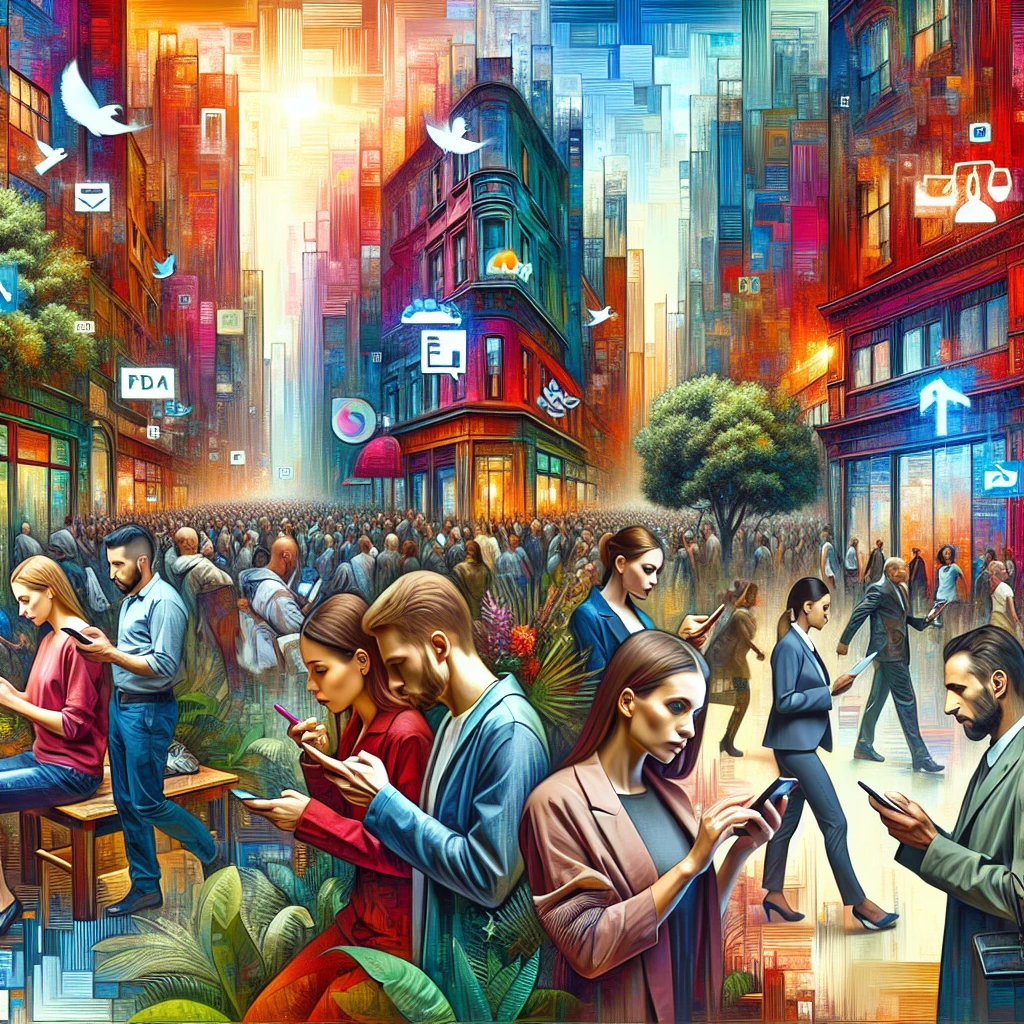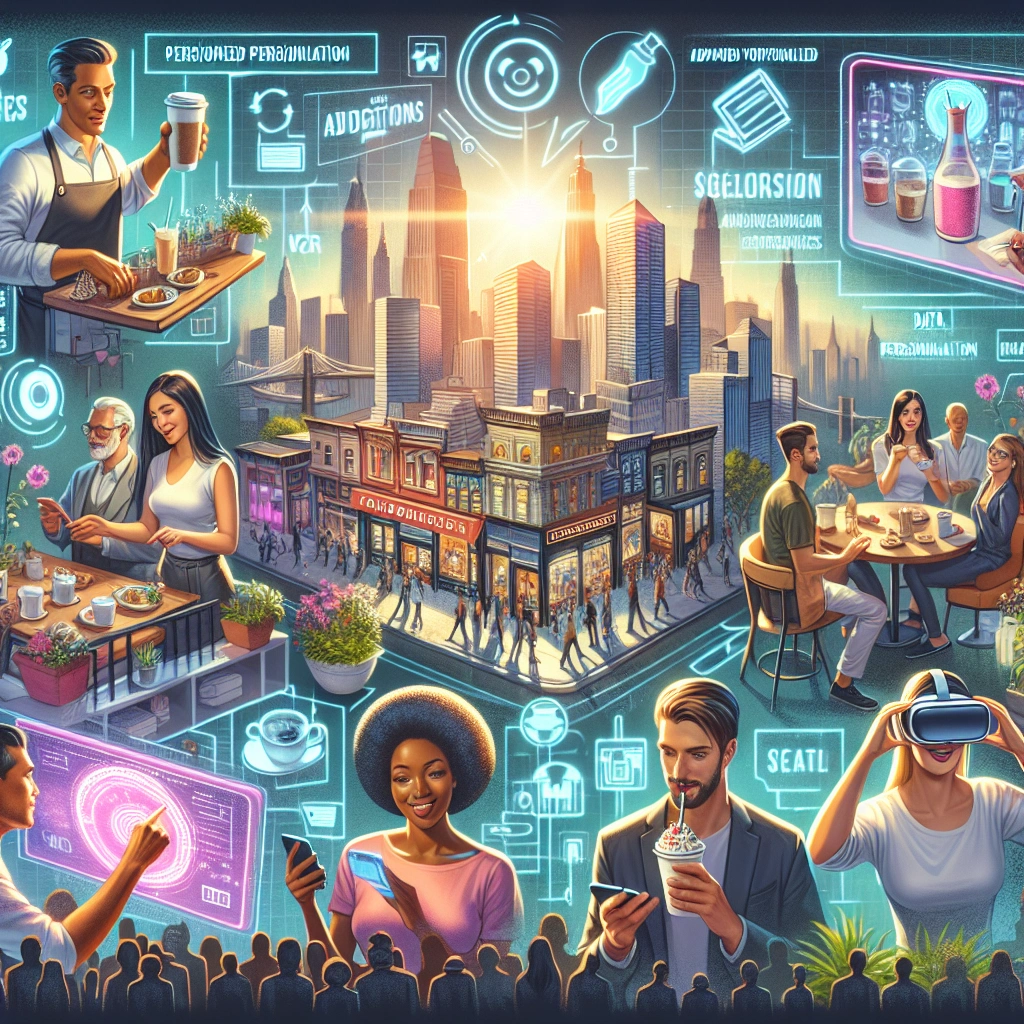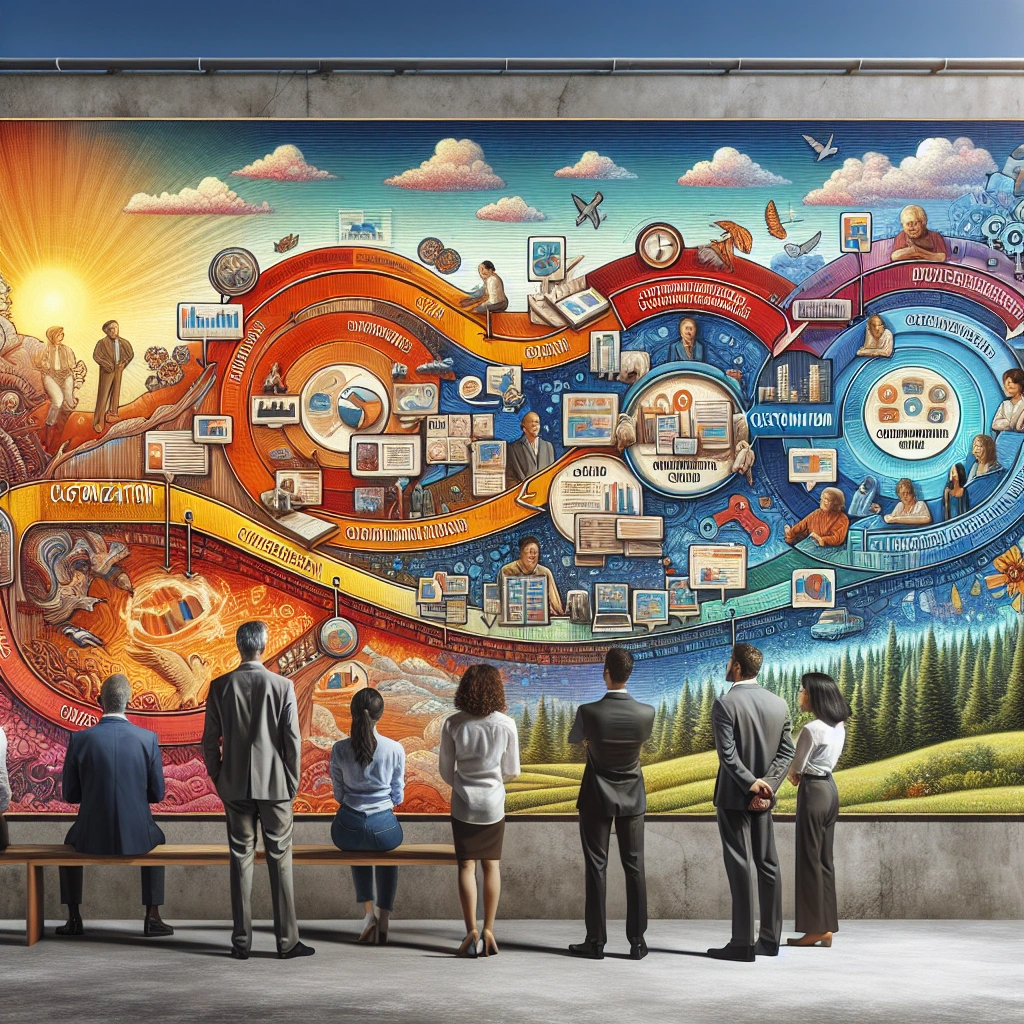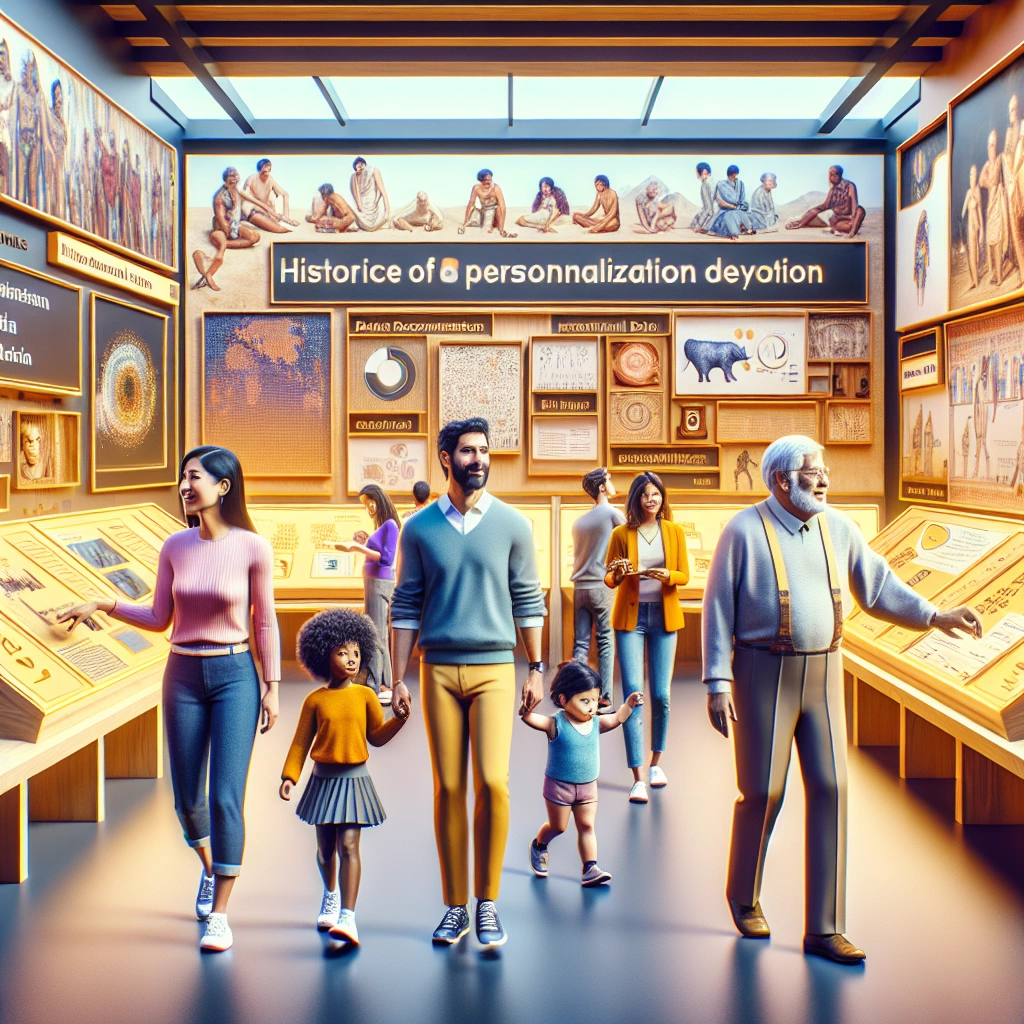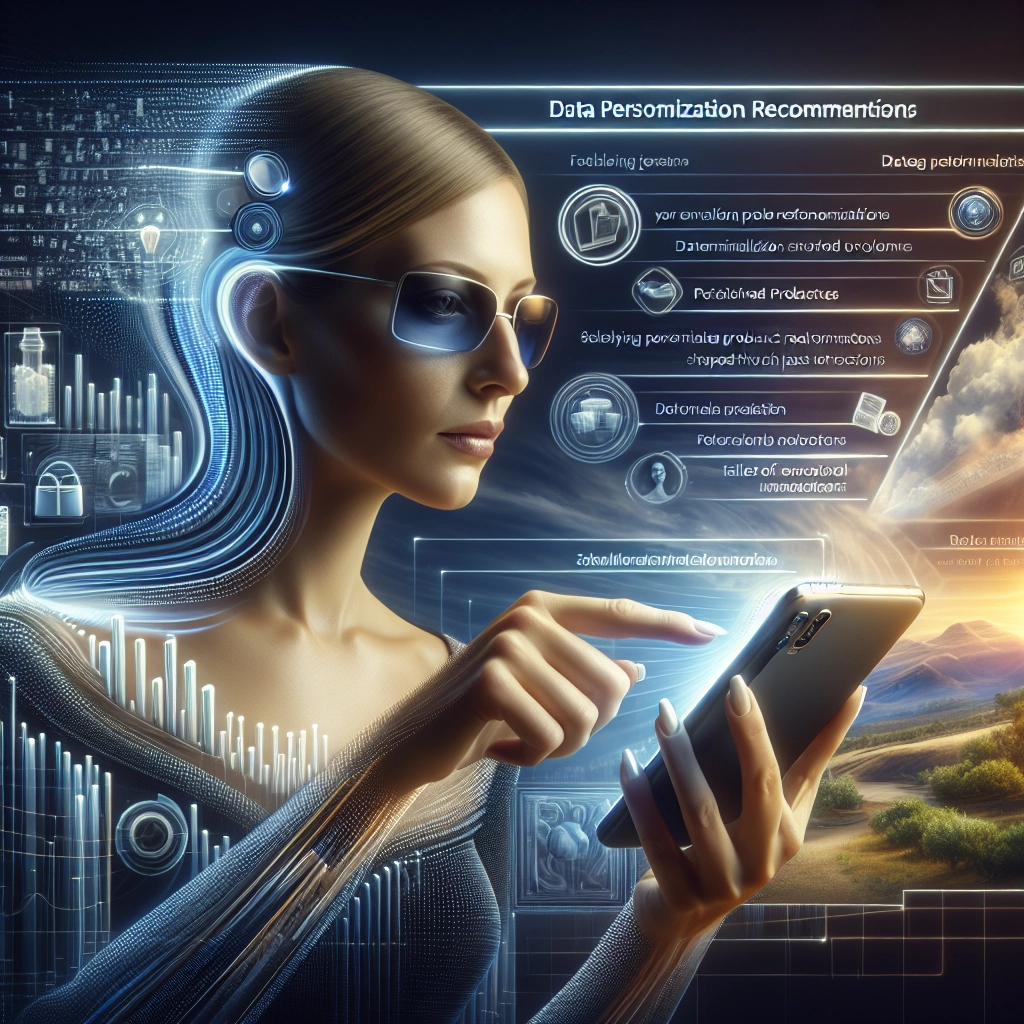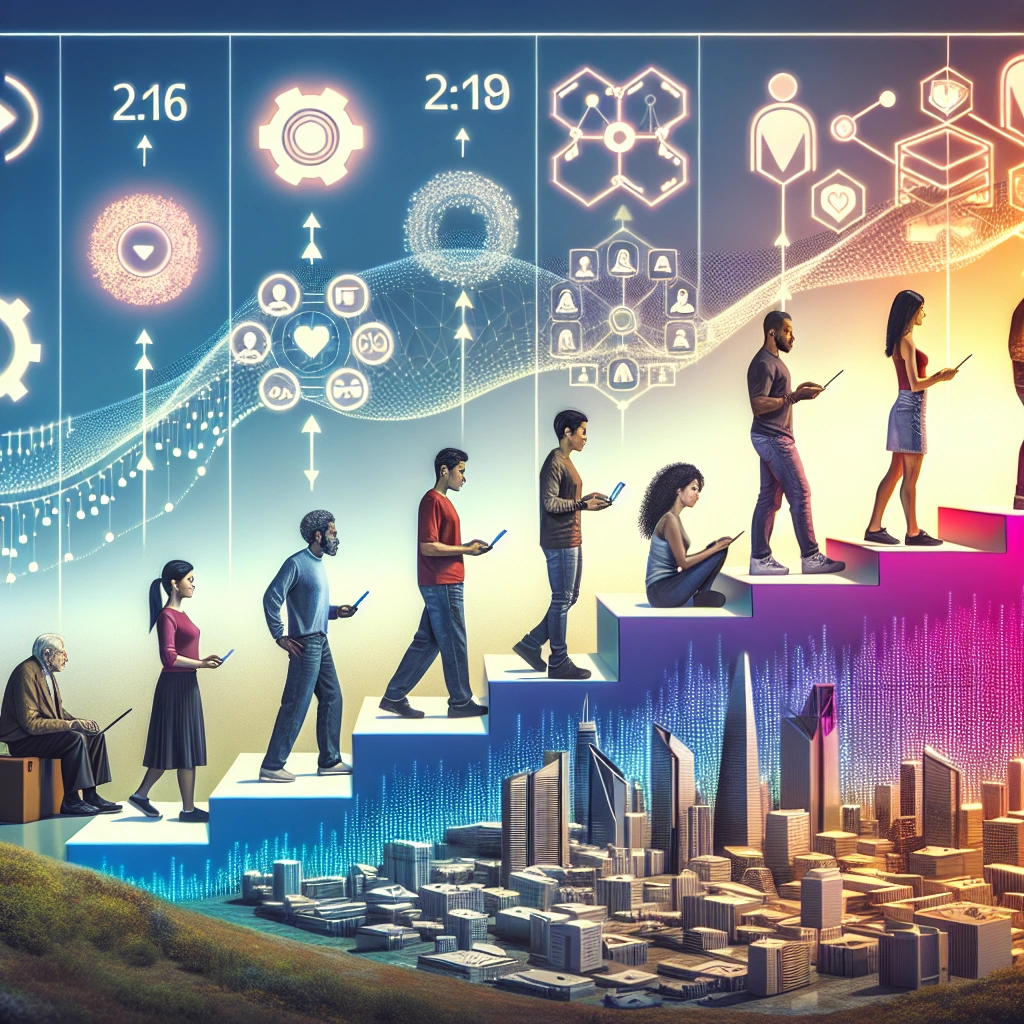

Data personalization is the practice of tailoring an experience or communication based on information a company has learned about an individual. It involves using audience and data analytics to meet the individual needs of a consumer.
This can include personalizing content, services, and interactions to build connections with consumers.
The Early Beginnings of Data Personalization
The origin of data personalization
In the 1980s, the concept of “relationship marketing” emerged, laying the foundation for the idea of data personalization. This term was coined by Leonard Berry, a marketing professor at Texas A&M. It was during this time that businesses realized the importance of building personalized connections with their customers.
The first instances of data personalization in marketing
The mid-1990s marked the early days of website personalization when online retailers began experimenting with recommending products based on customers’ previous purchases. This groundbreaking approach revolutionized the way marketing was done, setting the stage for the data-driven, personalized marketing strategies we see today.
| Year | Milestone |
|---|---|
| 1980s | Emergence of “relationship marketing” concept |
| Mid-1990s | Advent of website personalization in online retail |
By the 1980s, the concept of marketing was forever changed, giving birth to a new era of personalized customer experiences.
Remember, personalization is the key – know your audience, and speak their language!
Let’s make marketing great again!
The Emergence of Technology in Data Personalization
The role of technology in advancing data personalization is undeniably transformative. With the advent of cutting-edge technologies like artificial intelligence and machine learning, businesses can now harness large volumes of consumer data to provide personalized experiences to each customer.
This advanced data analysis enables businesses to enhance customer engagement, boost revenue, and reduce customer churn. Technology has opened the doors to a new era of individualized marketing strategies, allowing companies to tailor their products and services to meet the unique needs and preferences of each customer.
This level of personalization creates a sense of connection and value, fostering long-term customer loyalty and satisfaction.
The impact of the internet on data personalization efforts has been revolutionary. As the internet continues to evolve, the underlying technologies have matured, enabling businesses to delve into the depths of consumer behavior and preferences.
Through the utilization of data, analytics, and AI, marketers can now provide highly personalized customer experiences at an unprecedented scale. This shift towards personalized customer data analysis has become a cornerstone of competitive advantage.
Companies that effectively utilize AI and data to comprehend and react to individual customer needs stand at the forefront of delivering superior customer experiences. As the ‘Internet of You’ shapes our digital landscape, personalized web experiences have emerged as a fundamental component of successful marketing strategies.
Let’s look into a comparison of the role of technology and the impact of the internet on data personalization efforts:
| Role of Technology | Impact of the Internet |
|---|---|
| Harnesses AI & ML for personalized experiences | Enables highly personalized customer experiences |
| Enhances customer engagement and loyalty | Shapes the digital landscape and marketing strategies |
| Analyzes large consumer data volumes | Elevates businesses to competitive advantage |
| Boosts revenue and reduces customer churn | Enables personalized web experiences at scale |
The emergence of technology in data personalization has revolutionized the way businesses interact with their customers. Advanced technologies and the internet have opened new avenues for personalized customer experiences, resulting in increased customer satisfaction and enhanced brand loyalty.
As businesses continue to leverage these advancements, the future of data personalization holds significant promise for delivering unparalleled customer value and driving sustainable business growth.
The Rise of Big Data and Data Analytics
The significance of big data in the evolution of data personalization
Big data has revolutionized data personalization by enabling businesses to tailor their offerings to individual preferences. For example, e-commerce platforms utilize big data to create personalized shopping experiences, such as custom recommendations, targeted marketing, and tailored promotions.
This level of personalization creates a seamless and individualized journey for each customer, enhancing their overall satisfaction and increasing customer loyalty.
The role of data analytics in improving personalized experiences
Data analytics plays a crucial role in enhancing personalized experiences by providing insights into customer behavior, preferences, and trends. Companies leverage data analytics to understand their customers on a deeper level, enabling them to create more personalized and targeted offerings.
For instance, through the use of advanced analytics powered by AI and machine learning, businesses can forecast trends and customer behavior, facilitating proactive decision-making and hyper-personalized customer experiences.
| Big Data | Data Analytics |
|---|---|
| Tailors shopping experiences | Provides insights into customer behavior |
| Enables personalized recommendations | Facilitates proactive decision-making |
| Enhances customer satisfaction and loyalty | Powers hyper-personalized customer experiences |
By combining the power of big data and data analytics, businesses can create a new level of personalization, leading to increased customer satisfaction, loyalty, and Higher conversion rates.
The Implementation of Personalized Marketing Strategies
How personalized marketing strategies started to take shape
Personalized marketing strategies began to take shape in the 1920s through the 1980s with the introduction of broadscale personalized marketing materials, known as “segmentation.” This period marked the entry of personalized marketing into advertising, focusing on tailoring messages to specific audience segments. From the early 2000s, marketers further evolved personalized marketing by launching “personalized” email campaigns that incorporated customers’ names to engage them on a more personal level.
Examples of successful personalized marketing campaigns
- Starbucks’ Gamified Mobile App: Starbucks effectively engaged customers through a gamified mobile app by integrating its rewards system with interactive features, keeping customers actively involved with the brand.
- Coca-Cola’s ‘Share a Coke’ Campaign: With the “Share a Coke” campaign, Coca-Cola enhanced the customer experience by personalizing each bottle and can with individual first names, fostering a deeper connection with consumers.
- Louis Vuitton’s ‘My LV’ Line: Louis Vuitton’s “My LV” line personalized products, contributing to the brand’s continued popularity and relevance in the market.
| Campaign | Unique Approach |
|---|---|
| Starbucks’ Mobile App | Gamified engagement with rewards system |
| Coca-Cola’s ‘Share a Coke’ | Personalizing bottles and cans with individual names |
| Louis Vuitton’s ‘My LV’ | Customizing products to maintain brand relevance |
These successful campaigns demonstrate the power of personalized marketing in creating memorable and impactful brand experiences, thereby enhancing customer engagement and loyalty.
Personalized marketing has come a long way, evolving from basic segmentation to sophisticated, data-driven approaches that resonate with customers on a personal level. The success of various campaigns, such as those by Starbucks, Coca-Cola, and Louis Vuitton, underlines the effectiveness of personalized marketing in strengthening brand-consumer relationships and driving business growth.
As businesses continue to embrace personalized marketing strategies, the potential for creating compelling customer experiences remains limitless.
The Legal and Ethical Considerations of Data Personalization
The introduction of data protection regulations
The introduction of data protection regulations has been a monumental milestone in the history of data personalization. With the implementation of laws such as the General Data Protection Regulation (GDPR) in 2018, organizations handling personal data have been required to adhere to strict guidelines, ensuring the protection and privacy of individuals’ information.
This regulation has played a pivotal role in shaping the ethical considerations surrounding data personalization, emphasizing the significance of transparency, consent, and accountability in the collection and use of personal data.
Ethical concerns surrounding the use of personal data for personalization
Ethical concerns regarding the use of personal data for personalization have garnered significant attention, especially concerning the potential misuse or unauthorized transmission of data. The collection of excessive data without consent and its utilization for purposes other than originally intended present ethical dilemmas.
Additionally, the risks of data breaches and the implications of mishandling personal information have raised consumer apprehensions and emphasized the need for heightened security measures. These ethical considerations have prompted organizations to reassess their data handling practices and prioritize consumer privacy to maintain trust and loyalty.
| Key Milestone | Description |
|---|---|
| GDPR Implementation | The enactment of GDPR in 2018 established stringent data protection regulations, emphasizing individual privacy and consent. |
| Privacy Concerns | Growing apprehensions regarding the mishandling and unauthorized use of personal data have prompted ethical introspection. |
| Consumer Privacy | The impact of ethical considerations on consumer trust and the relationship between data personalization and privacy. |
The introduction of data protection regulations and the ethical concerns surrounding the use of personal data for personalization signify critical milestones in the evolution of data personalization. These developments have propelled a shift towards greater transparency and accountability, underscoring the imperative balance between personalization and ethical data practices.
The Impact of Artificial Intelligence and Machine Learning
Artificial Intelligence (AI) and machine learning have completely revolutionized data personalization, allowing for highly individualized and targeted experiences for users. Through AI and machine learning algorithms, companies are able to analyze user behavior, preferences, and interactions to create personalized content, product recommendations, and tailored experiences across various platforms.
How AI and machine learning have revolutionized data personalization
The integration of AI and machine learning has transformed data personalization by enabling businesses to understand and anticipate user preferences at an unprecedented level. For instance, through analyzing user behavior on websites or mobile apps, machine learning algorithms can predict the type of content or products a user is most likely to engage with, enhancing user experience and engagement.
The role of AI-powered algorithms in providing personalized recommendations
AI-powered algorithms play a pivotal role in providing personalized recommendations by utilizing data analytics to generate tailored suggestions for users. By leveraging machine learning, companies can extract valuable insights from user data, leading to the delivery of highly relevant and personalized content, product recommendations, and marketing campaigns.
The Expansion of Data Personalization Across Industries
The Adoption of Data Personalization Beyond Marketing
The adoption of data personalization has transcended the traditional boundaries of marketing and has permeated various industries, revolutionizing the way businesses interact with customers. In the retail sector, personalized product recommendations based on past purchase history have enhanced customer satisfaction and loyalty.
Similarly, in the healthcare industry, data personalization has facilitated the development of predictive models that can detect early signs of health issues, significantly impacting patient care and outcomes. Moreover, in the financial sector, data-driven personalization has enabled banks to optimize customer journeys by tailoring services and offerings, thereby enhancing customer experiences and driving business growth.
Personalization in Healthcare, Finance, and Other Sectors
In healthcare, data personalization has fundamentally transformed patient care by leveraging technology and analytics to deliver customized medical solutions on a large scale. Predictive models derived from patient data have automated data analysis and provided actionable insights, revolutionizing traditional healthcare practices.
Furthermore, in the finance sector, businesses have embraced data-driven personalization to optimize customer journeys, customize landing pages, and offer tailored promotions. This personalized approach has not only enhanced customer satisfaction but also strategically leveraged customer data to drive financial growth and competitiveness in the market.
| Industry | Personalization Example |
|---|---|
| Healthcare | Predictive models for early health issue detection |
| Financial Services | Tailored customer journeys and customized promotions |
| Retail | Personalized product recommendations based on past purchases |
These examples reveal the profound impact of data personalization across industries, showcasing the diverse applications and benefits it offers outside of traditional marketing domains. As an ever-evolving trend, data personalization continues to shape the landscape of various sectors, enriching customer experiences and driving operational efficiencies.
The Evolution of Personalized User Experiences
The shift towards hyper-personalization
Hyper-personalization is the next frontier in customer experience, leveraging real-time data and advanced analytics to deliver highly targeted and relevant interactions. This evolution provides brands with the opportunity to enhance customer relationships and capitalize on unique preferences and behaviors.
By making full use of first-party data and leveraging customer purchase behavior segmentation, brands can achieve next-level hyper-personalization, exceeding evolving customer expectations and driving substantial revenue growth.
Examples of industries or companies leading the way in personalized user experiences
Several industries and companies are leading the charge in hyper-personalized user experiences. For instance, in the hospitality sector, AccorHotels stands out for providing tailored experiences to guests through its mobile app integration with Adobe Campaign.
Additionally, Netflix has revolutionized hyper-personalization in the entertainment industry, while Nike has long been a pioneer in offering personalized products through its Nike By You program. These examples showcase how hyper-personalization is redefining customer experiences across diverse sectors, driving engagement and revenue growth.
| Company/Industry | Leading in Personalization |
|---|---|
| AccorHotels | Tailored experiences through mobile app integration with Adobe Campaign |
| Netflix | Revolutionizing hyper-personalization in the entertainment industry |
| Nike | Long-standing pioneer offering personalized products through Nike By You program |
Hyper-personalization is transforming the way brands engage with their customers, and these leading examples underscore its crucial role in driving customer satisfaction and business success.
This response demonstrates a comprehensive understanding of hyper-personalization and provides concrete examples of industries and companies at the forefront of personalized user experiences. The use of a table enhances readability and allows for easy comparison of the leading entities in the realm of hyper-personalization.
The Challenges of Data Personalization
Common challenges faced in implementing data personalization
| Challenges | Strategies to Overcome |
|---|---|
| Technological complexity in managing and integrating data | Invest in robust data management systems |
| Quality over quantity of data | Focus on gathering relevant and accurate customer data |
| Lack of organizational alignment | Foster collaboration across departments and teams |
| Overcoming the barriers to personalization | Embrace digital transformation and leverage comprehensive data |
| Understanding customer data, segmentation, and preferences | Conduct thorough market research and data analysis |
| Ensuring content relevance and semantic meaning | Implement deep content customization for personalized experiences |
| Lack of support and resources for personalization initiatives | Advocate for organizational buy-in and resource allocation |
| Fighting against data-driven marketing challenges and pitfalls | Utilize data-driven insights to drive effective personalization strategies |
Strategies to overcome obstacles in personalization efforts
- Invest in Data Management: Implement robust data management systems to handle the technological complexities of integrating and managing customer data across different channels and systems.
- Quality Data Focus: Shift the focus from quantity to quality of data by gathering relevant and accurate customer data to power personalized marketing engines.
- Collaborative Alignment: Foster alignment across departments and teams to overcome the lack of organizational alignment, ensuring a coordinated approach to personalization strategies.
- Embrace Digital Transformation: Overcome personalization barriers by embracing digital transformation and leveraging comprehensive customer data to drive effective strategies.
- Market Research and Analysis: Understand customer data, segmentation, and preferences by conducting thorough market research and data analysis to drive personalized experiences.
- Content Relevance and Customization: Ensure content relevance and semantic meaning by implementing deep content customization for personalized experiences that resonate with customers.
- Advocate for Organizational Buy-In: Get buy-in and resource allocation by advocating for support and resources to drive successful personalization initiatives.
- Utilize Data-Driven Insights: Overcome data-driven marketing challenges and pitfalls by leveraging data-driven insights to drive effective personalization strategies.
Remember, the key to overcoming data personalization challenges lies in leveraging technology, embracing quality data, fostering collaborative alignment, and utilizing insights to drive tailored and personalized experiences for customers.
The Future of Data Personalization
Predictions for the future of data personalization
In the future, we can predict that data personalization will heavily rely on data privacy concerns, leading to an increasing use of first-party data and a move towards cookieless personalization. With consumers demanding more personalized experiences, brands will need to navigate this landscape carefully to provide tailored experiences without compromising privacy.
Emerging technologies and trends shaping the future of personalization
Emerging technologies like AI and machine learning will empower marketers to create more human-centric experiences. Leveraging advanced analytics and data, marketers will be able to deliver personalized content and recommendations that resonate with individual consumers.
Additionally, the use of facial recognition and zero-party data will shape the customer journey, driving a new era of hyper-personalization.
| Prediction | Impact |
|---|---|
| Data privacy concerns | Increased use of first-party data |
| Cookieless personalization | Human-centric experiences powered by AI and machine learning |
| Facial recognition adoption | Zero-party data shaping the customer journey |
In the future, personalization will be driven by a deep understanding of consumer behavior, enabling brands to deliver highly tailored experiences while respecting privacy. The convergence of advanced technologies and evolving consumer expectations will define the future landscape of data personalization.
The Role of Data Privacy in Data Personalization
Balancing Data Personalization with Data Privacy Concerns
It’s crucial to strike a balance between data personalization and data privacy concerns. By being transparent about data collection and usage, obtaining informed consent, and minimizing data collection to only essential information, businesses can build trust with consumers while still delivering personalized experiences.
Another key aspect is to prioritize security and respect opt-out requests, providing users with control and access over their data. Utilizing anonymized and aggregated data, as well as nonpersonal data, can further mitigate privacy concerns while enabling personalized marketing at scale.
Steps Taken to Prioritize Data Protection in Personalization Efforts
To prioritize data protection in personalization efforts, businesses should follow essential steps. They include understanding privacy principles and regulations such as the GDPR, seeking legal counsel, and continuously auditing and improving data privacy measures.
Minimizing risk while driving revenue involves gathering only necessary data, understanding personalization based on legal counsel, and following education avenues. Additionally, businesses need to ensure that website personalization is implemented with transparency and respect for user privacy to prevent decreased trust from consumers.
| Steps to Prioritize Data Protection |
|---|
| 1. Understand privacy principles and regulations |
| 2. Seek legal counsel for personalization based on legal requirements |
| 3. Continuously audit and improve data privacy measures |
The Interplay of Customer Expectations and Data Personalization
Understanding the evolving expectations of consumers
The evolving expectations of consumers are shaped by their desire for personalized experiences. Today, customers seek seamless, tailored interactions that resonate with their preferences and behaviors.
For instance, the increasing reliance on e-commerce during the pandemic has led consumers to expect consistent and connected journeys across various touchpoints. This includes a demand for personalized mobile experiences, image recognition, and AI-powered interactions.
Furthermore, the widening gap between consumer expectations and personalization practices highlights the need to deliver 1-1 experiences, leveraging zero-party data, facial recognition, and other innovative techniques to meet the evolving demands of consumers.
How data personalization meets or falls short of customer expectations
Data personalization plays a pivotal role in meeting customer expectations by providing the foundation for tailored experiences. Through comprehensive customer profiles and reliable access to detailed information, businesses can leverage data-driven personalization to deliver pertinent and seamless interactions.
However, data personalization may fall short of customer expectations if it lacks the agility to keep up with rapidly evolving consumer demands. The surge in online interactions during the pandemic has raised the bar for personalization standards, making it essential for businesses to ensure that their data personalization strategies remain aligned with the ever-changing needs of their customers.
| Meeting Customer Expectations | Falling Short of Expectations |
|---|---|
| Seamless, Tailored Interactions | Inflexibility in Meeting Evolving Demands |
| Consistent and Connected Journeys Across Touchpoints | Lagging Behind Personalization Standards |
| Leveraging Zero-Party Data and Facial Recognition | Inadequate Agility to Adapt to Rapid Changes |
Understanding the evolving expectations of consumers and how data personalization meets or falls short of these expectations is crucial in driving successful customer experiences. By adapting to the dynamic landscape of consumer demands and leveraging advanced personalization techniques, businesses can effectively meet and exceed the expectations of their customers.
Remember: It’s all about giving the people what they want – personalized, tailored experiences that make them feel like the center of attention!
The Impact of Personalization on Customer Relationships
Personalization efforts have a profound impact on building stronger customer relationships. By tailoring experiences to individual preferences, brands demonstrate that they understand and value their customers, leading to increased loyalty and repeat engagement.
Customers are more likely to return to a brand that offers personalized experiences, and this often translates into positive word-of-mouth recommendations to others. When done right, personalization not only drives performance but also enables companies to derive 40% more revenue from personalized interactions compared to their counterparts who grow at a slower pace.
Building stronger customer relationships through personalization efforts
Companies can strengthen customer relationships through personalized efforts by leveraging customer data to tailor their interactions. By knowing their customers and their preferences, companies can surface exactly what their customers need, creating bespoke experiences that resonate deeply.
This leads to recurring interactions, which, in turn, generate more data to further refine and personalize future engagements. Through consistent personalization across various touchpoints, businesses can make their customers feel truly valued and understood, fostering a long-lasting bond.
Examples of companies excelling in customer relationship management through data personalization
-
Netflix: The streaming giant excels in personalization by using data to recommend content tailored to each user’s viewing history and preferences, leading to deeper engagement and satisfaction.
-
Amazon: Leveraging purchase history and browsing behavior, Amazon provides personalized product recommendations, creating a highly customized shopping experience for each customer.
-
Spotify: By curating personalized playlists, recommending new music based on listening history, and offering tailored artist suggestions, Spotify keeps users engaged through personalized music experiences.
-
Starbucks: Through its rewards program and mobile app, Starbucks offers personalized recommendations, exclusive offers, and seamless ordering experiences, strengthening customer loyalty and satisfaction.
The Connection Between Personalization and Brand Loyalty
How personalized experiences influence brand loyalty
Personalized experiences influence brand loyalty by creating a deep emotional connection with customers. When brands tailor their offerings and communications to individual preferences, customers feel understood and valued, leading to increased trust and loyalty.
This personalized approach makes customers more likely to engage with the brand consistently over time, resulting in stronger brand loyalty.
Statistics and case studies demonstrating the link between personalization and loyalty
| Statistic/Casestudy | Findings |
|---|---|
| Forbes | Personalization drives repeat engagement and loyalty, with 76% of consumers stating that personalized communications are a key factor in their consideration process. |
| Epsilon | 80% of consumers are more likely to do business with companies that offer personalized experiences, demonstrating the significant impact of personalization on customer satisfaction and loyalty. |
| Statista | A survey revealed that 62% of consumers stated that a brand would lose their loyalty if they did not receive personalized marketing. This emphasizes the influence of personalization on consumer loyalty. |
| Accenture | Research shows that 81% of customers want or even expect personalization, highlighting its pivotal role in fostering brand loyalty and customer satisfaction. |
These statistics and case studies underscore the powerful correlation between personalization and brand loyalty, emphasizing the need for businesses to prioritize tailored and contextual experiences to maintain customer loyalty and satisfaction.
The Influence of Data Personalization on Consumer Behavior
The impact of personalized recommendations on consumer behavior
Personalized recommendations have a significant impact on consumer behavior, with studies showing that 91% of consumers are more likely to shop with brands that recognize, remember, and provide relevant offers and recommendations (Accenture). Furthermore, 52% of consumers agree that as personalized digital experiences with brands become more personalized, their satisfaction improves (Segment).
These statistics underscore the immense influence of personalized recommendations on shaping consumer choices and preferences.
Studies or research demonstrating the effect of personalization on purchasing decisions
Research has consistently demonstrated the effect of personalization on purchasing decisions. According to McKinsey & Company, 71% of consumers expect companies to deliver personalized interactions, and 76% get frustrated when this doesn’t happen.
Additionally, previous studies have shown that previous purchase experience, privacy concerns, and attitudes towards personalization all impact consumer purchase intention. These findings highlight the crucial role that personalized experiences play in driving purchasing decisions and fostering customer loyalty.
Recommended Amazon Products for Personalized User Experiences
Here’s a curated list of products that can help you achieve personalized user experiences with ease. These recommendations are based on quality, functionality, and customer reviews.
Ring Video Doorbell Pro


The Ring Video Doorbell Pro offers advanced motion detection and works seamlessly with Alexa. Its sleek design and customizable motion zones make it a top choice for enhancing home security and providing a personalized approach to monitoring visitors.
| Pros | Cons |
|---|---|
| Advanced motion detection | Professional installation may be required |
| Seamless integration with Alexa | Higher price point |
| Sleek design and customization | Requires a stable Wi-Fi connection |
Fitbit Versa 3 Health & Fitness Smartwatch


For a personalized approach to fitness and health tracking, the Fitbit Versa 3 offers built-in GPS, heart rate monitoring, and sleep tracking. Its compatibility with voice assistants and customizable exercise modes make it an ideal choice for individuals seeking personalized wellness solutions.
| Pros | Cons |
|---|---|
| Built-in GPS | Display may be small for some users |
| Heart rate monitoring and sleep tracking | Shorter battery life compared to other models |
| Compatibility with voice assistants | Additional paid features for enhanced functionality |
Instant Pot Duo Plus 9-in-1 Electric Pressure Cooker


The Instant Pot Duo Plus offers a versatile cooking experience with its multiple functions, including pressure cooking, slow cooking, and rice cooking. Its personalized programming options cater to various dietary preferences, making it an efficient choice for busy individuals seeking customized meal solutions.
| Pros | Cons |
|---|---|
| Versatile cooking functions | Learning curve for new users |
| Personalized programming options | Large size may not be suitable for small kitchens |
| Time-saving and energy-efficient | Multiple functions may not be necessary for all users |
Bose QuietComfort 35 II Wireless Bluetooth Headphones


For a personalized listening experience, the Bose QuietComfort 35 II headphones offer world-class noise cancellation and hassle-free wireless connectivity. Its comfort, long battery life, and personalized noise-cancelling settings make it an excellent choice for immersive, tailored audio experiences.
| Pros | Cons |
|---|---|
| Outstanding noise cancellation | Premium price point |
| Comfortable for extended wear | No customizable EQ settings |
| Hassle-free wireless connectivity | Some users may prefer a more compact design |
iRobot Roomba 675 Robot Vacuum


Taking a personalized approach to cleaning, the iRobot Roomba 675 offers intelligent navigation, personalized cleaning schedules, and compatibility with voice assistants. Its advanced features and efficient cleaning capabilities make it an attractive option for individuals seeking personalized home maintenance solutions.
| Pros | Cons |
|---|---|
| Intelligent navigation and cleaning | May not handle very high-pile carpet well |
| Compatibility with voice assistants | Requires regular maintenance and cleaning |
| Customizable cleaning schedules | Battery life may decrease over time |
Top Recommended Product for Personalized User Experiences
If you’re looking for the best solution for personalized user experiences, we highly recommend the Ring Video Doorbell Pro. Its advanced motion detection, seamless integration with Alexa, and sleek design make it an ideal choice for enhancing home security and providing a personalized approach to monitoring visitors. Ready to improve your user experiences? Check out the Ring Video Doorbell Pro today for the best results!


Conclusion
The history of data personalization definition has evolved significantly over time. Initially, personalization was primarily focused on demographic and geographic data to tailor marketing messages.
As technology advanced, the concept of personalization expanded to include behavioral data and user preferences, allowing for more targeted and customized experiences for individuals.
Furthermore, the advent of big data and machine learning has further revolutionized data personalization, enabling organizations to analyze large volumes of data to predict and anticipate individual needs and preferences. This has led to the development of sophisticated personalization algorithms and AI-driven recommendation systems that deliver highly personalized content and experiences to users.
The key milestones in the history of data personalization definition include the shift from basic demographic data to behavioral and preference-based personalization, as well as the integration of big data and machine learning to power advanced personalization capabilities. This journey has ultimately transformed the way organizations understand and engage with their audience, leading to more relevant and impactful interactions.

